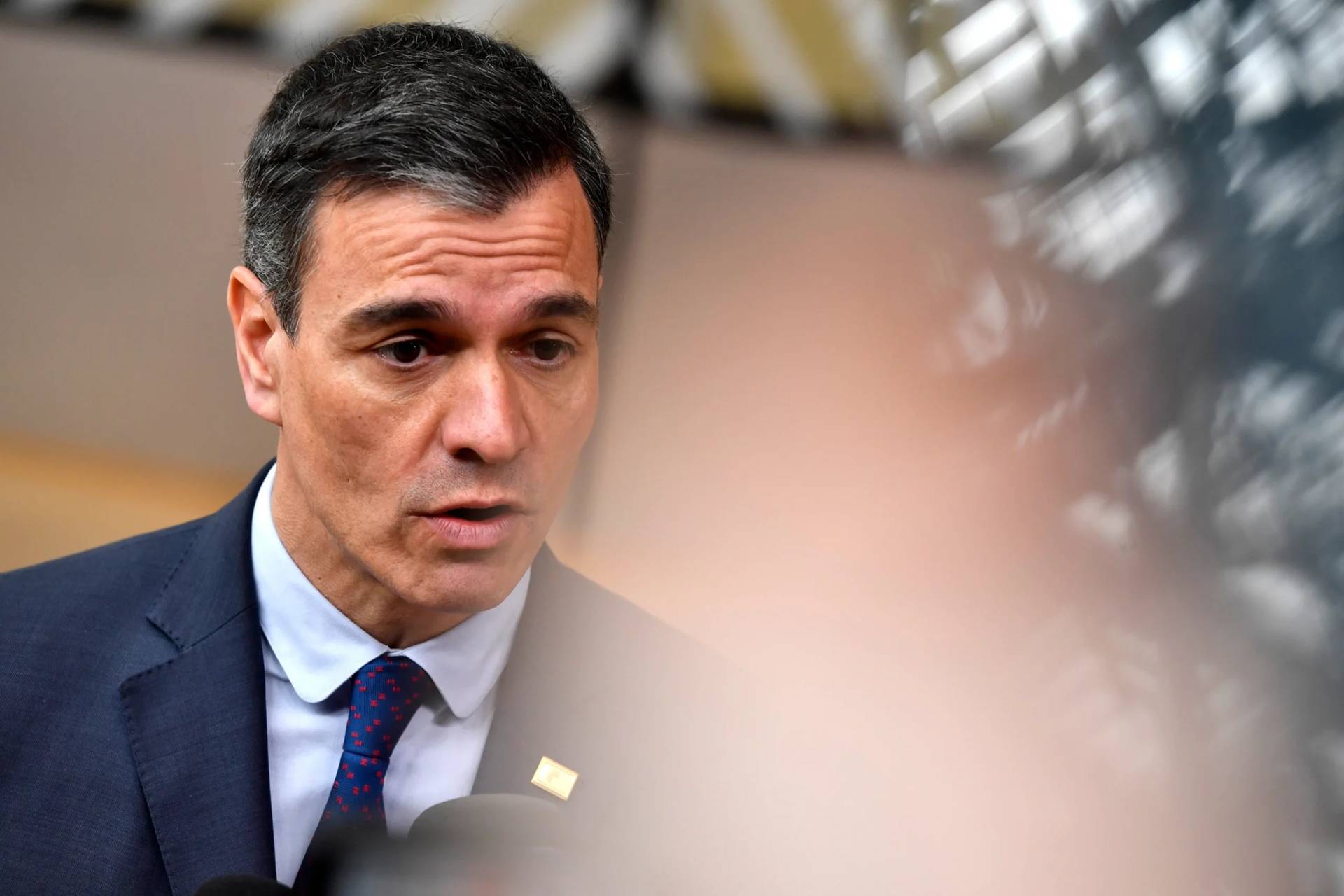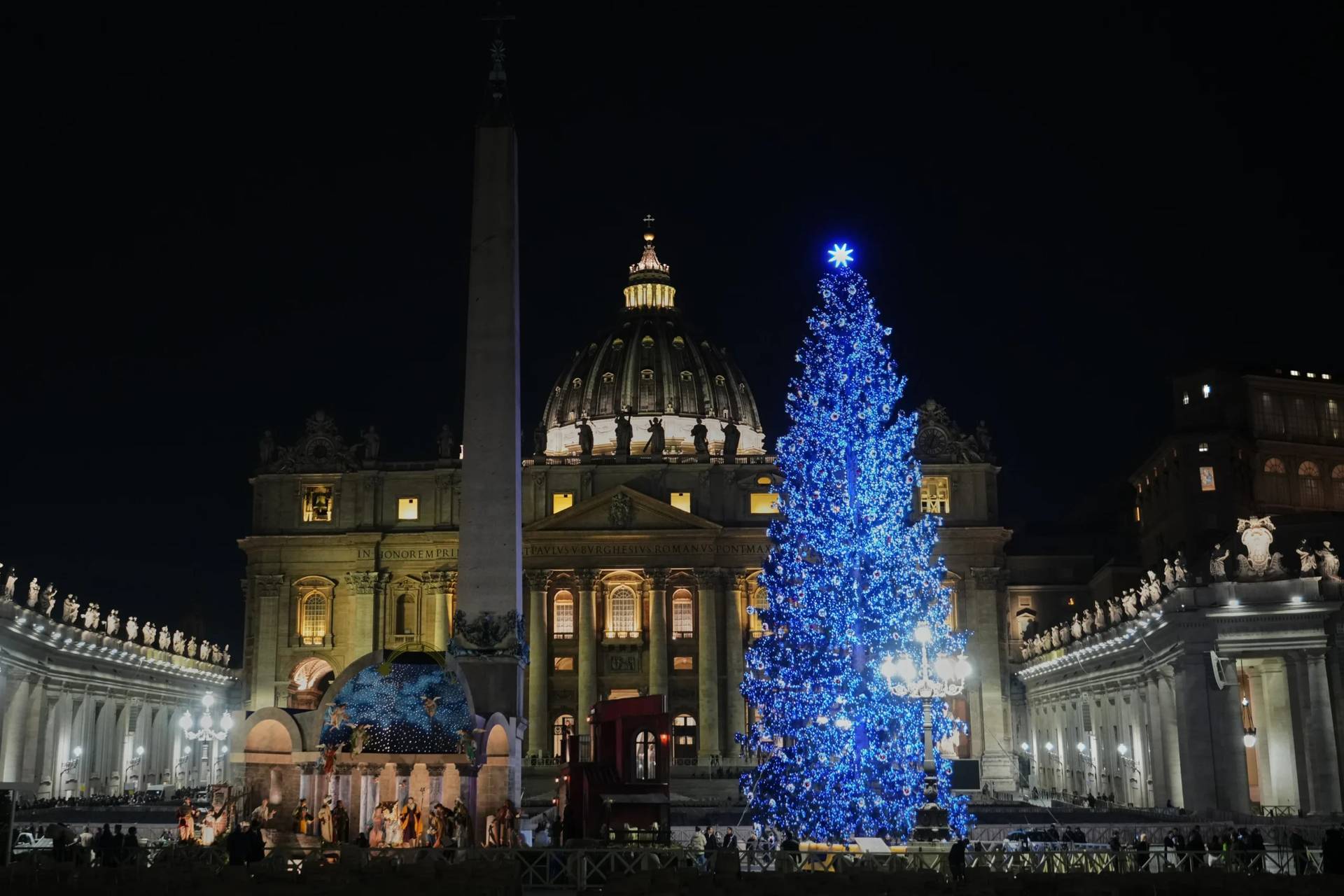ROME– Against the backdrop of mounting global terrorism and war, including the bombing of two Coptic churches in Egypt on Palm Sunday, and with the U.S. on Friday dropping the world’s most powerful non-nuclear device in Afghanistan against ISIS targets, Pope Francis on Good Friday asked Jesus to come to the rescue of those “struck down” by indifference, violence, and war.
Speaking to Christ in the form of prayer, Francis expressed “shame” for all “the innocent blood that’s shed every day by women, by children, by immigrants, and by people persecuted for the color of their skin, their ethnic and social belonging, and for their faith in you.”
Beginning shortly after 9:00 p.m. Rome time, Francis presided over the traditional Way of the Cross procession on Friday, recalling the path of Christ to his crucifixion. This year a man in a wheel chair, nuns from India and Africa, an Egyptian family and faithful from China were among those who helped carry a large cross around Rome’s Coliseum.
Vatican security officials estimated the crowd size at Rome’s Colosseum at 20,000 despite unusually heavy security measures surrounding the ceremony.
Francis’s final prayer was divided into three sections, in which he expressed the shame of the world as well as its hope, and then made appeals to Jesus, who Christians believe redeemed the world through his death on the Cross.
“O Christ, our only Savior, we turn to you again this year, with eyes lowered in shame and with hearts full of hope,” Francis said.
“O Christ, we turn to you with eyes of shame for all the images of devastation and shipwreck that have become common in our lives,” he said. “Shame for our silence over so much injustice, for our hands dirty in the giving, and greedy in the snatching.”
The hierarchy of the Catholic Church wasn’t spared by Francis either: “Shame for all the times that we, bishops, priests, consecrated men and women, have scandalized and wounded your body, the Church,” the pope said.
“So much shame, Lord but our heart is nostalgic also of the confident hope that you will treat us according not to our merits but only according to the abundance of your mercy; that our treason doesn’t reduce the immensity of your love; that your heart, motherly and fatherly, doesn’t forget us for the hardness of our entrails,” he said.
“We ask you to break the chains that hold us prisoners in our selfishness, in our voluntary blindness and in the futility of our worldly calculations,” he prayed.
The tradition of the pope heading the meditation of the Way of the Cross in the Colisseum dates back to the pontificate of Benedict XIV, who died in 1758. He’s the pope who initiated this reflection at the Colisseum, in what’s left of a building that is an iconic symbol of Imperial Rome where the blood of many martyred Christians was shed.

Yet the modern tradition goes back to Pope Paul VI, who revived it in 1964, and it has been a yearly appointment since then, attracting thousands of pilgrims. St. John Paul II used to carry the Cross himself, and it rapidly became a worldwide television event.
Each year, popes choose the person who writes the meditations for the fourteen stations.
This year, Francis asked French theologian Anne-Marie Pelletier, winner of the 2014 Ratzinger Prize, to write the meditations for this year’s event. It’s the fourth time in modern times that a woman has at least contributed to the meditations.
Beyond the meditations, Pelletier introduced some changes to the prayer, changing the names of some of the stations. In this way, the second station, traditionally described as “Jesus carries the cross,” became “Jesus is denied by Peter.” The seventh went from marking “Jesus’ second fall” to “Jesus and the daughters of Jerusalem.”
Traditionally, the Way of the Cross procession recalls the path of Christ to his crucifixion, including passages from the Bible, a short meditation and prayer, and this time was no exception.
In the fourth station, for instance, Pelletier chose a passage from the book of Isaiah which says the Christ “was despised and we held him of no account. Yet he has borne our griefs and carried our sorrows.”
The banality of evil, she wrote in the meditation, forces us to ask, “how many men, women and even children are victims of violence, abuse, torture and murder, in every time and place?
“Jesus does not seek shelter in his divinity. He becomes part of the awful flood of sorrows that man inflicts upon man. He knows the abandonment of the downtrodden and those utterly forsaken,” Pelletier wrote.
For the seventh station, the theologian chose a passage from the book of Luke, in which Jesus tells the daughters of Jerusalem not to cry for him, but for themselves and their children.
“The tears that Jesus entrusts to the daughters of Jerusalem as an act of compassion, these tears of women are always present in this world,” she wrote in the meditation.
“Not that women alone should weep, as if it were their lot to grieve, passive and helpless, as part of a history that men alone are called to write,” Pelletier wrote.
The grief of those women embraces the tears shed in a world where there is “much to weep for:” They are tears of “terror-stricken children and of those wounded on battlefields crying out for a mother, the tears of the sick and dying, alone on the threshold of the unknown.”
Earlier in the day, the pontiff participated in the liturgy of the Lord’s Passion in St. Peter’s Basilica. Good Friday is among the rare occasions when the pope celebrates a liturgy but does not preach. Instead, the preacher of the papal household, Father Rainero Cantalamessa, does so every Good Friday.

The Capuchin priest began by asking what was the need to recall the death of a man who lived 2000 years ago, when there are so many people getting killed today: From those killed with chemical weapons in Syria, to the Christian Copts who died in Egypt as result of two terrorist attacks on Palm Sunday.
“The reason is that this death has changed forever the very face of death and given it a new meaning,” Cantalamessa said.
“The Cross,” meaning Jesus’ death, “does not ‘stand’ against the world but for the world: to give meaning to all the suffering that has been, that is, and that will be in human history,” he said.
Cantalamessa also said that we live in a “liquid society,” picking up from the concept of liquid modernity, developed by sociologist Zygmunt Bauman: “There are no longer any fixed points, any undisputed values, any rock in the sea to which we can cling or with which we can collide. Everything is in flux. Even the sexes. Even the values.
“Do we not stray, as through infinite nothingness?” he said, this time quoting Friedrich Nietzsche.
According to the Capuchin preacher there are many reasons for contemporary distress, but it is important not to err in the diagnosis. What Jean-Paul Sartre said, “where God is born, man dies,” is not true, Cantalamessa said. It is the opposite: “Where God dies, man dies.
“Killing God,” he’d noted before, “is the most horrible of suicides.” And this, he continued, “is in part what we are seeing.”
Even through his Twitter account, Francis spoke about the cross and the victory of love over darkness:
O Cross of Christ, teach us that the rising of the sun is more powerful than the darkness of night, and God’s eternal love wins always. pic.twitter.com/FY2I0JKCeo
— Pope Francis (@Pontifex) April 14, 2017
Holy Week is the most solemn period of the year for Christians around the world. It began with Palm Sunday, which Francis celebrated in St. Peter’s Square. On Saturday, the pope will preside over the Easter Vigil Mass, and on Sunday he’ll celebrate an open-air Mass in St. Peter’s Square.











